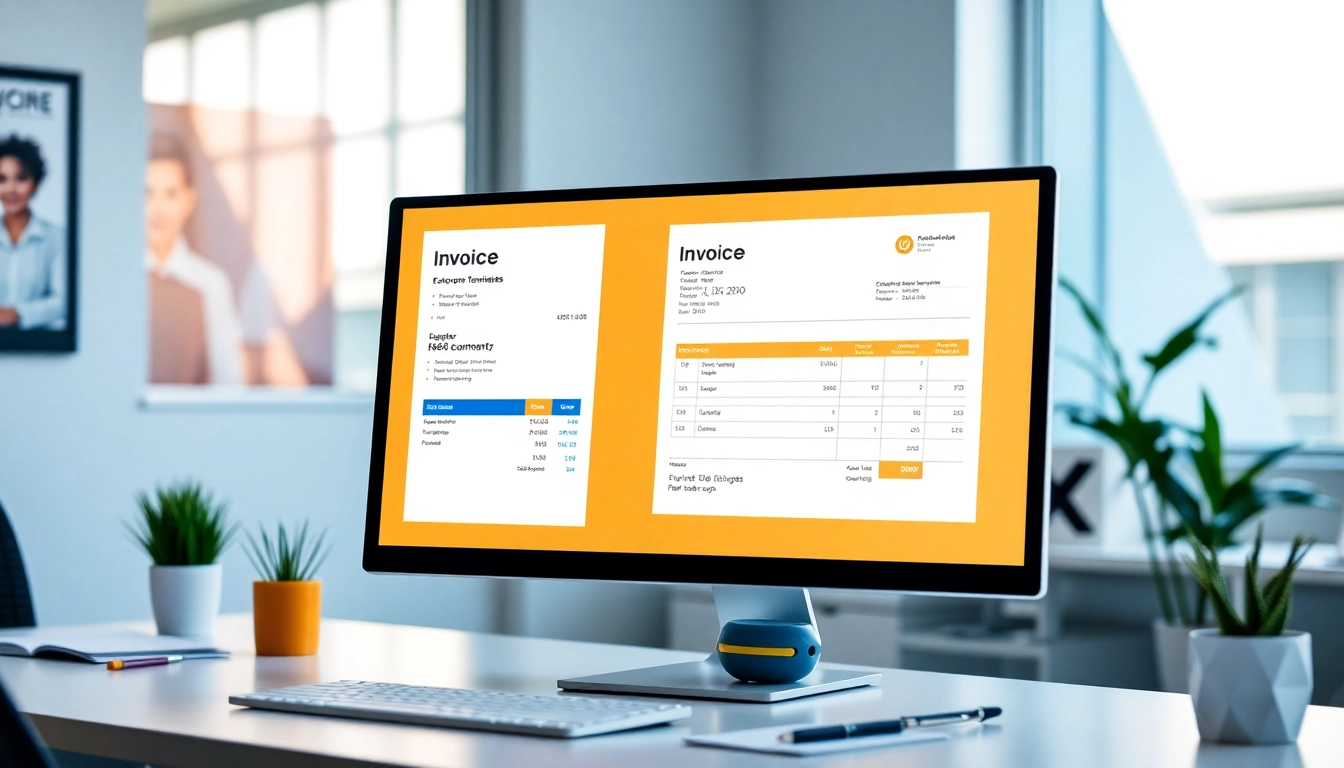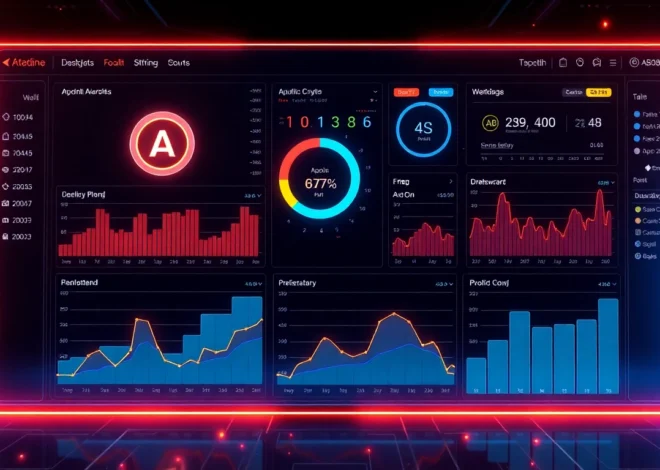
Simple and Fast Free Invoice Software to Streamline Your Business Billing
Streamlining Your Business Billing with Efficient Estimate and Invoice Software
In today’s fast-paced business environment, efficiency and professionalism are crucial components for success. Managing estimates and invoices efficiently can significantly impact your cash flow, client relationships, and overall reputation. With the advent of advanced estimate software and online invoice tools, entrepreneurs and small business owners can now generate, send, and manage invoices with unprecedented speed and accuracy. Whether you’re a freelancer, contractor, or small business owner, leveraging the right tools can streamline your billing process, save time, and improve your financial health. For a seamless, fast, and reliable experience, consider using Free Invoice software designed specifically for your needs.
Understanding Business Estimates and Invoices
What is an estimate in business and its role
An estimate in business is a preliminary assessment of the costs associated with a project or service. It provides clients with an approximate figure based on the scope of work, materials, labor, and other relevant factors. Estimates serve as a vital communication tool; they set clear expectations, aid in decision-making, and act as a foundation for future negotiations. Accurate estimates promote transparency, foster trust, and help prevent misunderstandings that could disrupt cash flow or damage customer relationships.
Differences between estimates and invoices explained
While both estimates and invoices are essential for financial management, they serve distinct purposes. An estimate is a proposal or quotation indicating potential costs before a project begins. It is not a bill but a forecast, and it can be adjusted as project parameters change. In contrast, an invoice is a formal request for payment issued after the work is completed or the service is rendered. It itemizes the delivered goods or services, specifies the amount due, and includes payment terms. Using dedicated estimate and invoicing software can automate these processes, ensuring accuracy and professionalism at every step.
How accurate estimates improve cash flow and client trust
Accurate estimates that reflect realistic costs enhance your credibility and foster client confidence. When clients trust your estimates, they are more likely to proceed with projects smoothly and pay promptly upon completion. Additionally, precise estimates help manage your cash flow by preventing undercharging or overcommitting resources. They enable better planning, resource allocation, and financial forecasting. Over time, reliably accurate estimates build your reputation as a professional, increasing repeat business and referrals.
How to Generate a Free Invoice Using Efficient Software
Step-by-step process for creating your first invoice
- Register or log in to your chosen invoice software platform, such as QUICKADMIN, which offers user-friendly interfaces and robust features.
- Create a new invoice by selecting the “New Invoice” option.
- Fill in client details. Enter the recipient’s name, address, contact information, and other relevant data.
- Add your business branding. Customize the invoice with your logo, brand colors, and professional layout to enhance credibility.
- Detail the goods or services. List items, quantities, unit prices, and totals. Use templates or AI-driven inputs to speed up this process.
- Apply taxes or discounts as needed, and review the invoice for accuracy.
- Preview and send. You can send the invoice directly via email, or download it as a PDF for manual dispatch.
Modern platforms like QUICKADMIN simplify this workflow through automation and voice commands, allowing even faster invoicing.
Leveraging AI to speed up invoice creation and reduce errors
Artificial Intelligence (AI) is transforming invoicing by enabling voice dictation and automatic data verification. With voice dictation, you can create invoices by simply describing the details aloud, dramatically reducing data entry time—up to five times faster than manual methods. AI algorithms also verify input accuracy, prevent common data entry errors, and suggest corrections, ensuring your invoices are error-free. This combination of speed and precision enhances professionalism and accelerates payment cycles.
Customizing invoices with your branding for a professional look
Branding is crucial in establishing trust and recognition. Most estimate software offers options to upload logos, select color schemes, and customize templates. Consistent branding across estimates and invoices reinforces your company’s identity and demonstrates professionalism. Additionally, incorporating payment terms, contact info, and personalized messages can improve client engagement and reduce disputes.
Benefits of Using Free Invoice Software Solutions
Saving time and increasing productivity with automation
Manual invoicing can be time-consuming, prone to errors, and divert your attention from core business activities. Free invoice software automates many tasks, such as populating client details, applying taxes, and generating professional templates. Voice input features further speed up the process, enabling you to create invoices in seconds. Automation reduces administrative overhead, allowing you to focus more on delivering value to your clients.
Enhancing professional reputation through branded and timely invoicing
Professional, branded invoices that are sent promptly reflect positively on your business. Automated scheduling ensures invoices go out on time, which boosts cash flow and client trust. Well-designed invoices with personalized branding not only look more credible but also help you stand out in competitive markets. Consistent and timely billing signals reliability, encouraging quicker payments and stronger relationships.
Managing your business finances securely and efficiently
Modern invoice platforms prioritize data security through encryption, secure login protocols, and compliance with data protection regulations. Digital invoicing reduces the risk of lost or damaged paper documents and simplifies record-keeping. Integration with financial software allows for seamless tracking of payments, overdue notices, and reports, streamlining your overall financial management.
Implementation Tips and Best Practices
Integrating invoice software with existing business systems
For maximum efficiency, integrate your invoice platform with accounting, CRM, and project management tools. APIs and built-in connectors facilitate real-time data synchronization, reducing manual work and errors. For example, linking estimates created in your CRM directly to invoicing modules ensures consistency and faster processing.
Tracking payments and managing overdue invoices
Effective invoicing isn’t just about creation; it requires diligent tracking. Use features like automated payment reminders, overdue alerts, and detailed reports. Clear communication channels via email and SMS enhance prompt payments, boosting your cash flow stability.
Optimizing mobile features for on-the-go invoicing
The ability to create and send invoices via mobile apps on smartphones and tablets ensures you remain productive anywhere. Voice dictation, quick access to templates, and instant sharing make mobile invoicing an invaluable tool for field service providers, freelancers, and busy entrepreneurs.
Performance Metrics and Continuous Improvement
Measuring the impact on cash flow and client satisfaction
Key performance indicators (KPIs) such as days sales outstanding (DSO), payment timeliness, and client feedback help assess the effectiveness of your invoicing system. Regular review of these metrics guides process adjustments, improves client retention, and accelerates cash inflows.
Updating your software for latest features and security
Keep your software current by taking advantage of continuous upgrades and security patches. New features like enhanced branding options, AI improvements, and mobile capabilities can further simplify your workflow and protect your data. Most providers, including QUICKADMIN, offer email support and customer resources to facilitate these updates.
Utilizing customer support and resources for ongoing success
Leverage tutorials, FAQs, and customer service to troubleshoot issues and learn best practices. Staying informed about new functionalities and industry trends empowers you to maximize your software investment and maintain a competitive edge.


